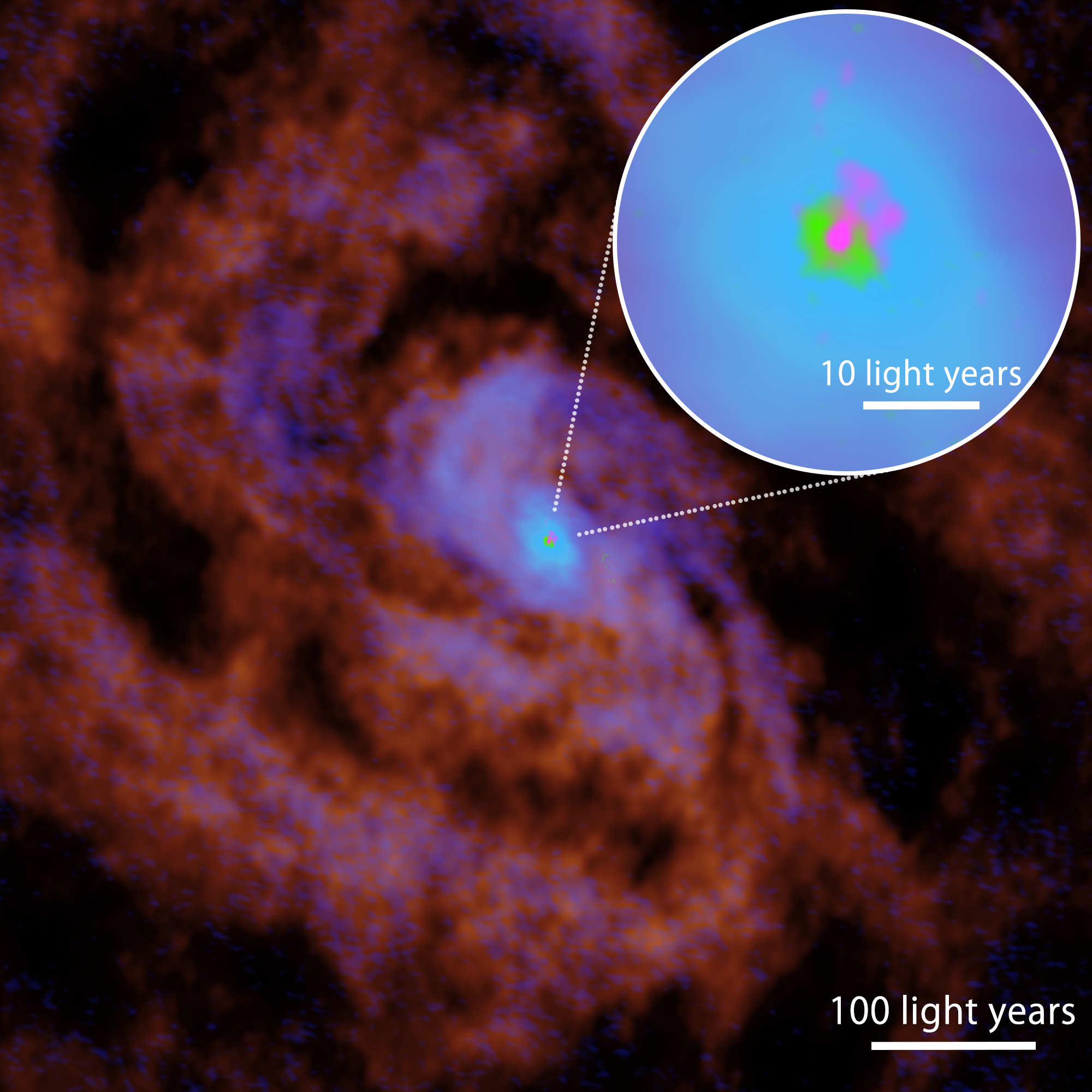DATE2023.11.03 #Press Releases
Supermassive Black Hole Feeding and Feedback are Finally Resolved at the Center of an Active Galaxy
Disclaimer: machine translated by DeepL which may contain errors.
National Astronomical Observatory of Japan
Kagoshima University
Tokyo Metropolitan University
School of Science, The University of Tokyo
RIKEN
Tohoku University
Announcement Summary
An international research team led by Takuma Izumi, an assistant professor at the National Astronomical Observatory of Japan, has achieved a groundbreaking milestone by observing the nearby active galactic nucleus of the Circinus Galaxy, with an extremely high resolution (approximately 1 light-year) by using the Atacama Large Millimeter/submillimeter Array (ALMA). This marks the world's first quantitative measurement of gas flows and their structures in the immediate vicinity, down to the scale of a few light-years, of a supermassive black hole in all phase gases including plasma, atomic, and molecular. As a result, the team has clearly captured the accretion flow heading towards the supermassive black hole and has revealed that this accretion flow is generated by a physical mechanism known as "gravitational instability.” Furthermore, the team also found that a significant portion of this accretion flow is not utilized for the growth of the black hole. Instead, most of the gas is expelled from the vicinity of the black hole as atomic or molecular outflows, and returns back to the gas disk to again participate into an accretion flow towards the black hole: this gas recycling process is akin to a water fountain. These findings represent a crucial advancement towards a comprehensive understanding of the growth mechanisms of supermassive black holes.
These observation results were published as Takuma Izumi et al. “Supermassive black hole feeding and feedback observed on sub-parsec scales” in Science on November 3, 2023 (DOI: 10.1126/science.adf0569).

Figure: The central region of the Circinus Galaxy observed with ALMA. The distributions of carbon monoxide (CO; reflecting the presence of medium-density molecular gas), atomic carbon (C; reflecting the presence of the atomic gas), hydrogen cyanide (HCN; reflecting the presence of high density molecular gas), and the hydrogen recombination line (H36α; reflecting the presence of ionized gas), are shown in red, blue, green, and pink, respectively. There is an active galactic nucleus at the center. This galaxy is known to have a tilted structure from the outer to the inner regions, with the central region resembling a nearly edge-on disk. The size of the central dense gas disk (green) is approximately 6 light-years: this has been observed clearly thanks to the high resolution of ALMA (see the inset for the zoom-up view). The plasma outflow travels almost perpendicular to the central dense disk. Credit: ALMA (ESO/NAOJ/NRAO), T. Izumi et al.
For more information, please visit the websites of the National Astronomical Observatory of Japan (NAOJ ) and NAOJ ALMA Telescope.
Journal
-
Journal name ScienceTitle of paper Supermassive black hole feeding and feedback observed on sub-parsec scales


